City-to-Sea BridgeSea-to-City Bridge
Paratene Matchitt
Rewi Thompson
John Gray
Type
- Sculpture
- Installation
Medium
- Iron
- Concrete
- Wood
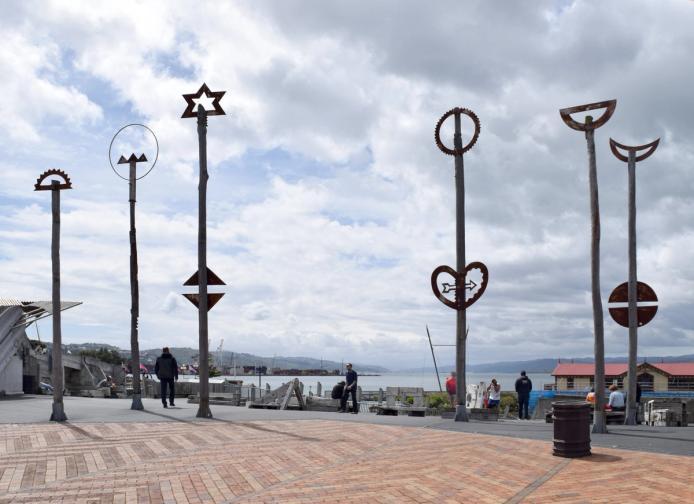
Rewi Thompson, John Gray and Paratene Matchitt, ‘City-to-Sea Bridge’ (1993) [pou], Te Ngākau Civic Square, CBD, Te Whanganui-a-Tara Wellington
Images: Bronwyn Holloway-Smith, Public Art Heritage Aotearoa New Zealand, 2021
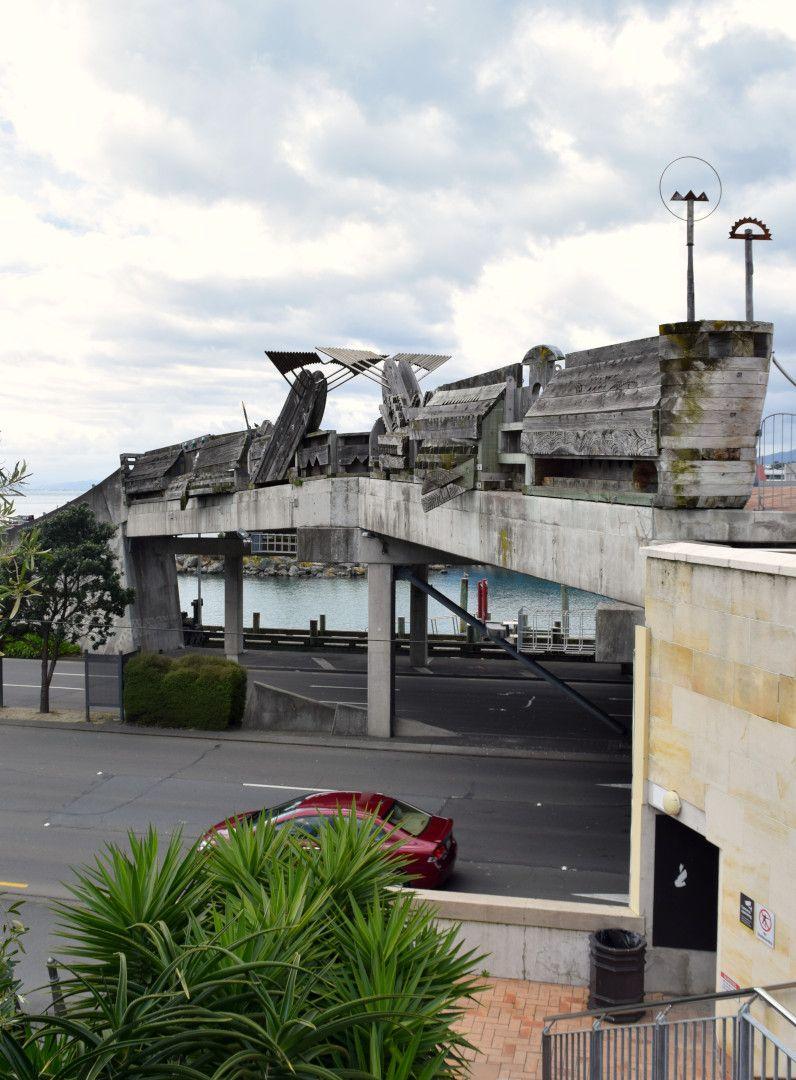
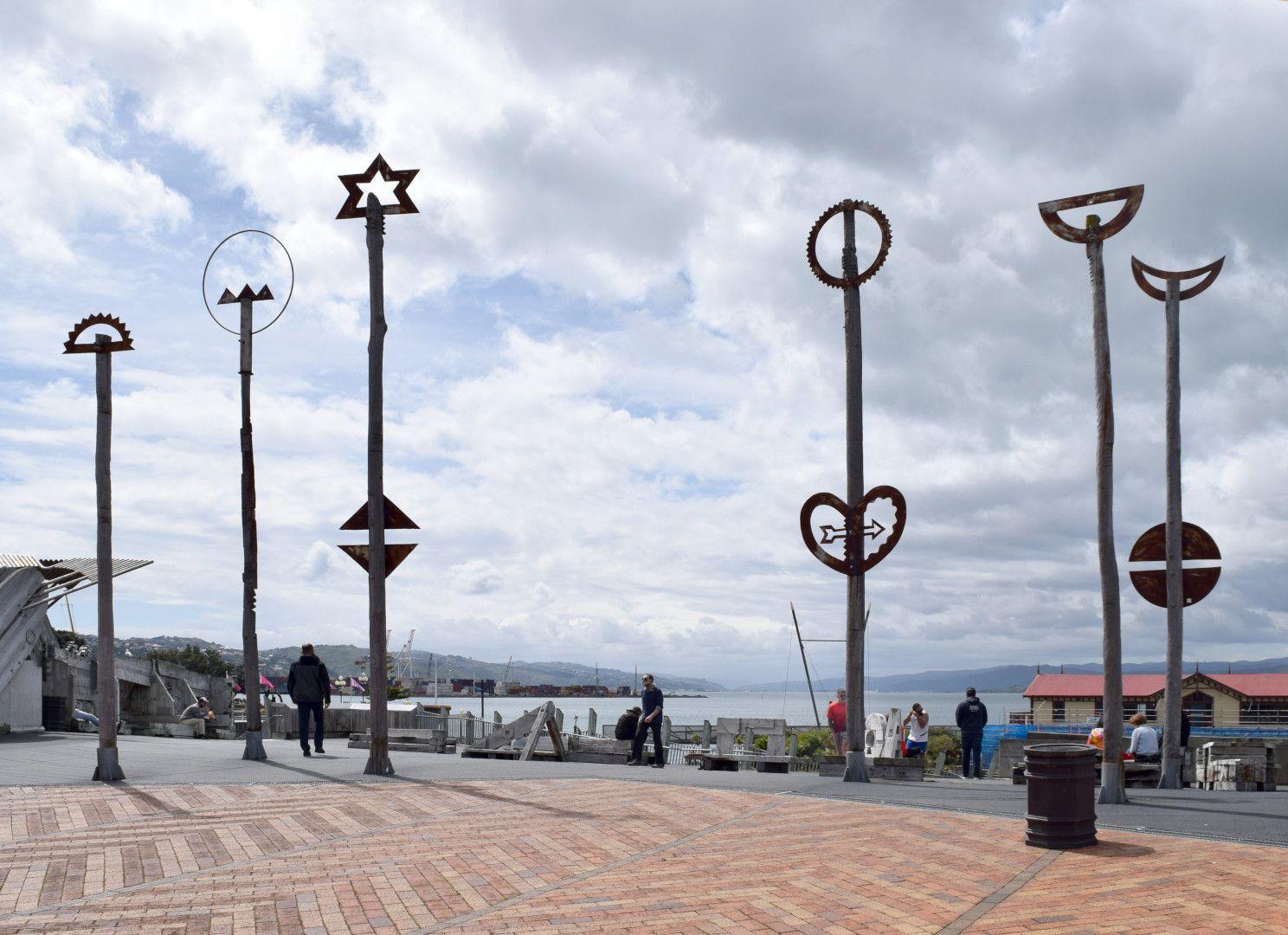
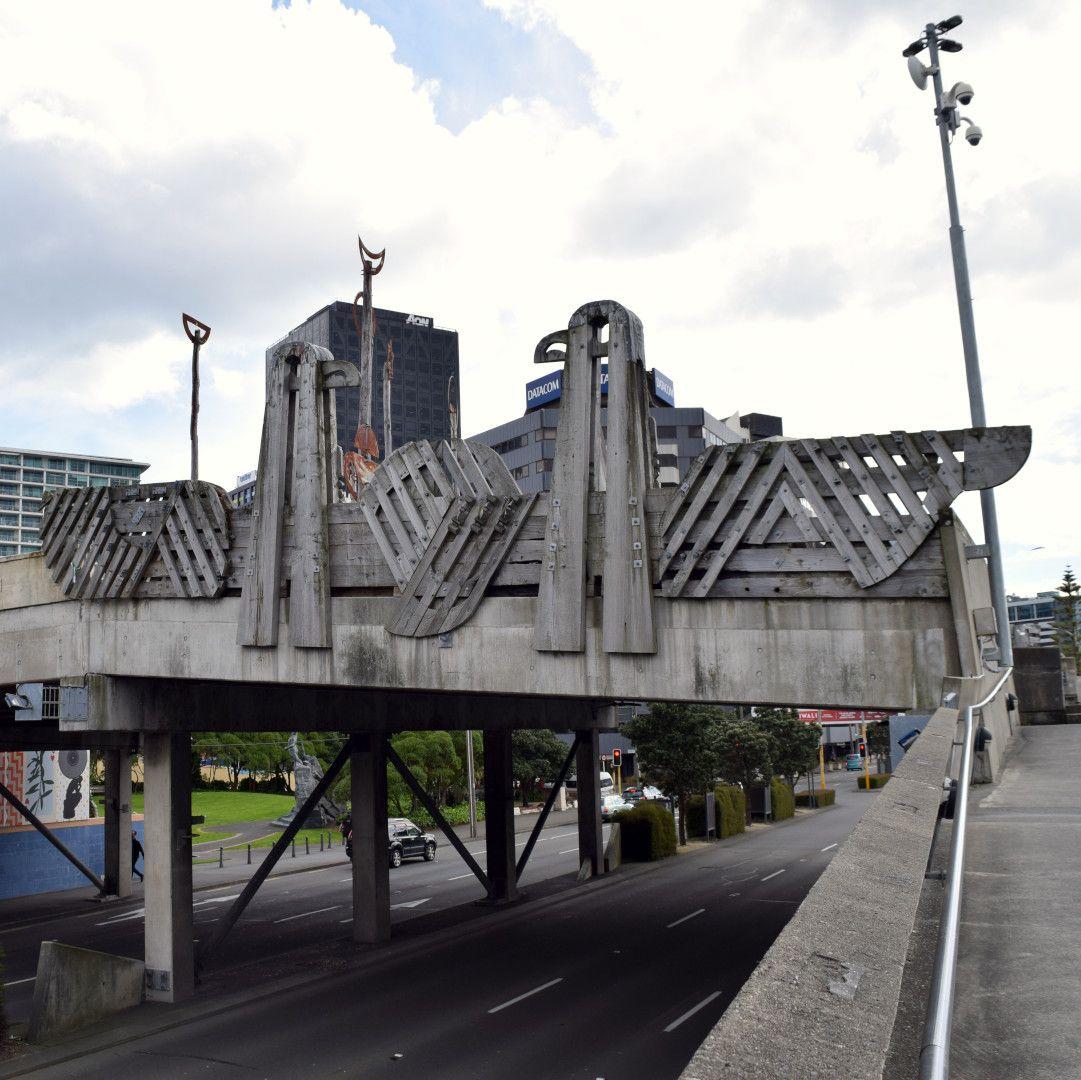
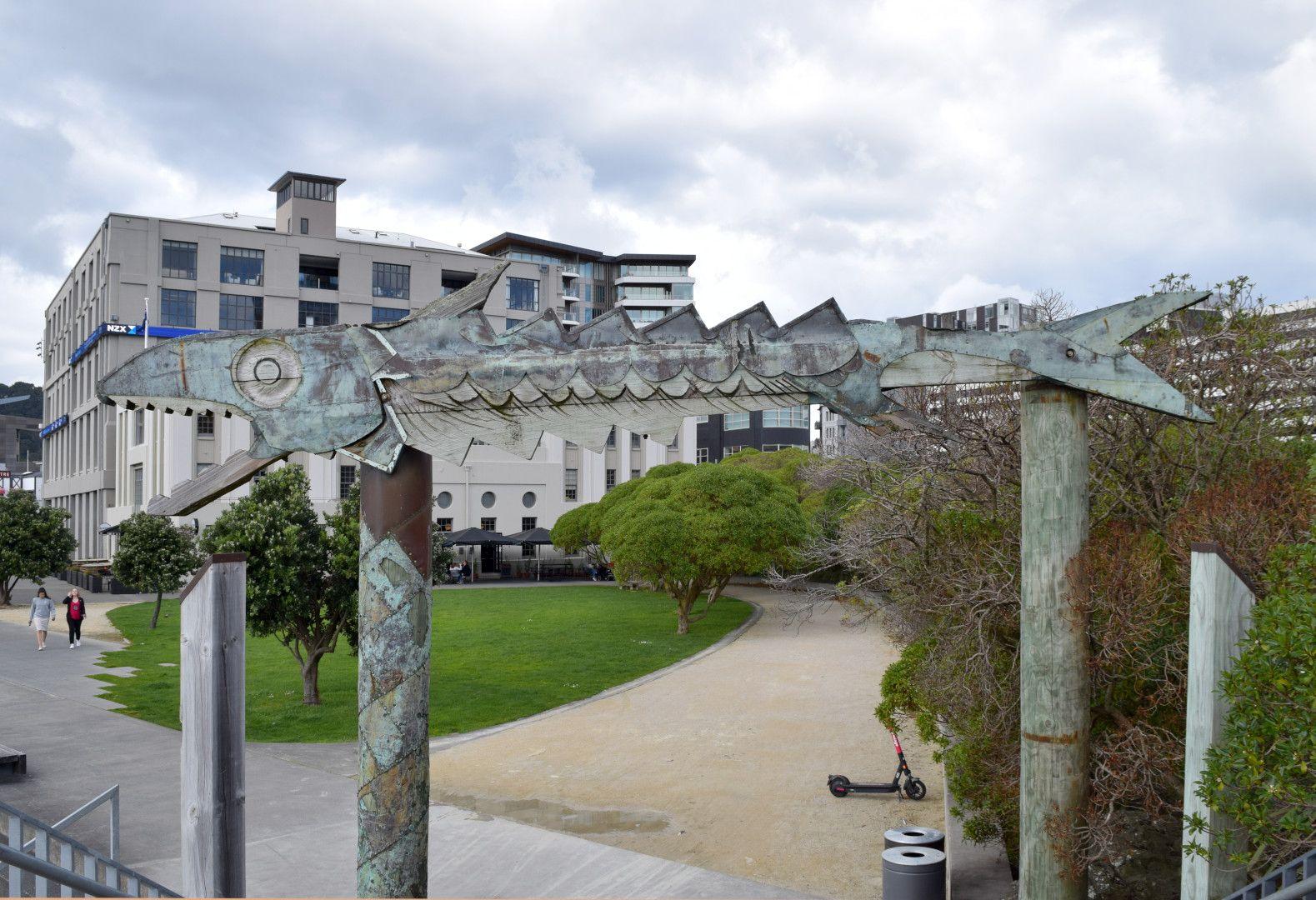
- DETAILS
- MAP
Description
A large, complex work integrating wood sculptures of taniwha (Ngake and Whātaitai) or whales, birds and fish, with poles carrying symbols of stars and the moon in various phases ('celestial pou'), on a functional bridge crossing the multi-lane Jervois Quay.
Initially called the Sea-to-City Bridge, emphasising the ocean as the axis of arrival onto the land, the City-to-Sea Bridge connects Te Ngākau Civic Square, the 'heart' of urban Wellington, to the waterfront. Prior to the 1980s this waterfront had been an exclusively industrial area with no public access. As the working port shifted north toward Kaiwharawhara, the waterfront was opened up as a leisure and cultural space including landmark institutions such as Te Papa Tongarewa ~ Museum of New Zealand and Museum of Wellington City and Sea.
Virginia Douglas has recounted how Thompson and Gray with Matchitt were commissioned to produce a design that would address the "cultural significance of public open space and the water's edge", one that would acknowledge that "cultural differences profoundly influence people's use of urban space and shorelines, and the meanings attached to these places." Douglas describes the bridge as reflecting "the stories, myths and features of and about Wellington City and the harbour. These include the Māori story of how Whanganui-a-Tara (Wellington harbour) was formed, references to voyages and navigation, natural forces and landforms. They also reference materials found around the waterfront. These were then woven together, like a whakapapa to tell a story of place and people."
A plaque installed with the work reads:
"Artist: Para Matchitt 1993 / These sculptures were created by Para to reflect this bridge between the sea and the city. / The whales and birds also are serving as barriers. / "How we got here" is the theme for the "gateway poles". The celestial representations and symbols of love illustrate how our ancestors arrived in Aotearoa, as today people arriving at the waterfront can cross to the heart of the city."
Within the collaboration elements of the project can be individually attributed: Matchitt is recognised as the maker of the 'celestial pou' and creatures on the outward facing walls of the bridge, Gray the fish archway and the decking pattern to the bridge itself, and Thompson the seaward, lagoon facing walkway.
Thompson had previously completed the landward maunga (mountain, sometimes called the pyramid) and paving ('Te Aho a Maui') while working with Athfield Architects. These elements connect the bridge to the square, invoking the rope with which Maui hauled up the fish/land of the North Island.
Gray has told us the story of his 'fish', recalling that an error the 'jig' for a stair left sawtooth pieces of wood without a use. He gathered these up, along with copper sheet recycled from the project, and created his open-mouthed, razor-backed, archway-fish while monitoring construction on site.
Matchitt's pieces for the bridge were made at a farm in the Esk Valley from locally felled exotic coniferous trees. All parts were trucked to Wellington, arriving in the middle of the night to be ritually washed in the sea before being craned into place. Gray recalls being amazed at how easily everything seemed to fit together.
According to Gray a further element had been planned for the project: undersea fish for the underside of the bridge. Sculptor Elizabeth Thompson was approached to complete this section, but the commission was not able to be completed.
See also:
- John Gray, 1994, `City-to-sea-bridge — more than meets the eye', Prodesign, (April/ May 1994).
